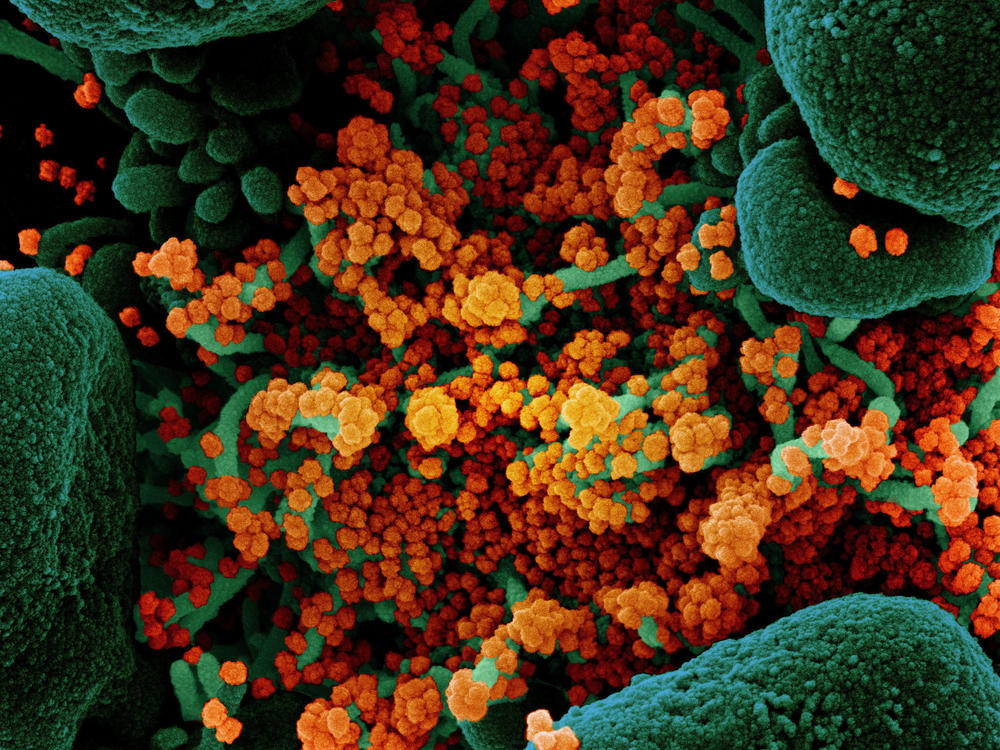Section Branding
Header Content
WHO: Airborne Transmission Plays Limited Role In Coronavirus Spread
Primary Content
The World Health Organization has issued a new scientific brief that summarizes what's known about the different ways the coronavirus can transmit.
The 10-page brief, posted Thursday, considers all the ways researchers think the coronavirus may be able to spread: through close contact with droplets expelled when an infected person coughs, sneezes, speaks or breathes; through the expulsion of small microdroplets that have the potential to spread over greater distances; and through contaminated surfaces.
The report also looks at the possibilities for the virus to be transmitted from mother to child, from animals to humans and through contact with urine, feces and blood.
Weighing the evidence, WHO maintains that the virus is mostly spread through close contact with infected people but calls for more research into the matter of transmission by aerosolized particles.
The WHO brief follows the publication Monday of an open letter from 239 scientists asking the agency to reconsider its position on aerosol transmission. The term refers to microscopic viral particles that can linger in the air and infect people who inhale clouds of those aerosolized particles.
"There is some evidence emerging, but it is not definitive," said Dr. Benedetta Allegranzi, WHO's technical lead for infection prevention and control, at a press conference Tuesday. "The possibility of airborne transmission in public settings, especially in very specific conditions — crowded, closed, poorly ventilated settings — cannot be ruled out."
WHO's scientific brief references "some outbreak reports related to indoor crowded spaces [which] have suggested the possibility of aerosol transmission, combined with droplet transmission, for example, during choir practice, in restaurants or in fitness classes," but says that transmission in these cases could also be explained by close contact with respiratory droplets and touching contaminated surfaces.
WHO recommends taking specific precautions against aerosols only in hospital settings during specific procedures such as inserting a breathing tube into a patient. That's been WHO's position since its first guidance documents on infection prevention and control of the novel coronavirus, issued Jan. 10.
But Thursday's brief does emphasize additional WHO guidance, including the wearing of fabric masks when physical distancing is difficult and avoiding crowded, enclosed spaces with poor ventilation.
Dr. Donald Milton, an aerobiologist at the University of Maryland and a lead author on the open letter pushing for more attention to aerosol transmission, says he still believes that aerosols could be responsible for superspreading events such as a choir practice in Washington state. He says he has "mixed feelings" about the latest WHO brief: "I'm glad to see they've moved a little bit. I'm disappointed they didn't move further."
Copyright 2020 NPR. To see more, visit https://www.npr.org.

